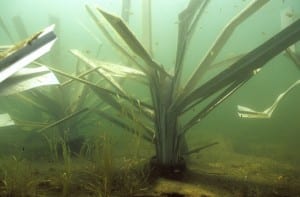Effects of addition of tilapia on the abundance of periphyton in freshwater prawn culture ponds with periphyton substrates
Abstract
An experiment was conducted to evaluate the effect of addition of tilapia on abundance of periphyton in freshwater prawn, Macrobrachium rosenbergii (de Man) in periphyton based culture system for a period of 120 days at Fisheries Field Laboratory Complex, Bangladesh Agricultural University, Mymensingh. A large pond (83×8.9 m) was drained completely and partitioned by galvanized iron sheet into 18 small ponds of 40 m2 each; of which 6 ponds were used for this experiment. The experimental ponds were divided into 2 treatments each with 3 randomly selected ponds. The absence and presence (0 and 0.5 individual m-2) of tilapia (Oreochromis niloticus) were investigated in 40 m2 ponds stocked with 3 prawn juveniles (5±0.05 g) m-2 with added substrates for periphyton development. A locally formulated and prepared feed containing 30% protein was supplied considering the body weight of prawn only. Addition of periphyton substrates significantly reduced the inorganic N-compounds (TAN, NO2-N, and NO3-N) in water column. Forty six genera of periphyton were identified belonging to the Bacillariophyceae (10), Chlorophyceae (21), Cyanophyceae (7), Euglenophyceae (2), Crustacea (1) and Rotifera (5) with significant difference (P<0.05) of phyto-periphyton except Euglenophyceae and without significant difference (P>0.05) of zoo-periphyton between the treatments. The abundance of periphyton biomass in terms of dry matter, ash, ash free dry matter and chlorophyll-a were significantly higher in tilapia-free ponds comparing to tilapia added ponds. Benthic organisms had no significant difference (p>0.05) between the treatments. Addition of tilapia in periphyton-based system benefited the freshwater prawn culture through (i) reducing toxic inorganic nitrogenous compounds in water (ii) reducing demand for supplemental feed (iii) using periphyton as additional natural feed and, (iv)improving survival and production of prawn and tilapia.
DOI: http://dx.doi.org/10.3329/jbau.v10i2.14924
J. Bangladesh Agril. Univ. 10(2): 313-324, 2012 More habitat articles at fishiding.com




